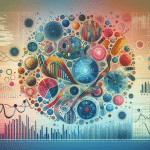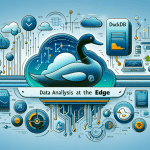The digital landscape is ever-evolving, and with it, the tools and strategies marketers employ to engage with their audiences effectively. Among the many programming languages that have emerged, R programming stands out for its powerful data analysis and visualization capabilities. This blog post delves into how R is transforming marketing strategies and enabling businesses to derive actionable insights from their data.
Understanding R Programming
R is an open-source programming language predominantly used for statistical computing and data analysis. Originally developed by statisticians in the 1990s, it has since gained widespread popularity among data scientists and analysts for its versatility and ease of use. With a vast ecosystem of packages and libraries, R allows users to conduct complex analyses and create sophisticated visualizations that can bring data to life. This makes it an invaluable tool for marketers looking to enhance their strategies.
The Role of R in Data Analysis
In the realm of marketing, data is king. Businesses generate vast amounts of information daily, ranging from customer interactions and purchasing behavior to social media engagement and website analytics. Here’s how R plays a crucial role in analyzing this data:
- Data Collection: R can integrate with various data sources, including Excel, databases, and APIs, making it easy to collect and prepare data for analysis.
- Statistical Analysis: Marketers can utilize R’s extensive statistical capabilities to identify trends, correlations, and patterns within their data.
- Predictive Modeling: R excels in creating predictive models that help forecast customer behavior and optimize marketing campaigns.
- Data Visualization: With its advanced graphical capabilities, R can produce visually appealing charts and graphs that enhance data interpretation and presentation.
How R Enhances Marketing Strategies
The integration of R into marketing strategies empowers marketers to make data-driven decisions. Here are some specific ways R is enhancing marketing efforts:
1. Customer Segmentation
Understanding the diverse needs of customers is vital for any marketing campaign. R enables marketers to segment their audience based on various criteria, such as demographics, purchasing behavior, and engagement levels.
- Using clustering techniques, businesses can group similar customers together, allowing for targeted marketing strategies.
- Segmentation helps tailor messages and campaigns that resonate with specific customer groups, ultimately increasing conversion rates.
2. Campaign Performance Analysis
Marketers must continually evaluate the effectiveness of their campaigns. R provides tools to analyze the performance metrics of various marketing initiatives, enabling businesses to refine their strategies in real time.
- By leveraging R to analyze A/B testing results, marketers can determine which elements of a campaign are driving the most engagement.
- R can also help track key performance indicators (KPIs), providing an overview of campaign success and areas for improvement.
3. Market Trend Analysis
Staying ahead of market trends is crucial for businesses aiming to maintain a competitive edge. R facilitates in-depth market analysis, helping marketers identify emerging trends and shifts in consumer preferences.
- With R’s time-series analysis capabilities, businesses can forecast future market behavior based on historical data.
- Sentiment analysis, another powerful feature, allows marketers to gauge public perception of their brand through social media and customer feedback.
4. Optimization of Marketing Spend
Budget allocation is a critical aspect of marketing strategy. R can assist marketers in optimizing their marketing spend by assessing the return on investment (ROI) for various channels.
- By analyzing past campaigns, R can help determine the most effective channels and strategies to invest in moving forward.
- Marketers can run simulations to explore different spending scenarios, ultimately leading to more informed budget decisions.
Challenges and Considerations
While R is a powerful tool, it’s important to acknowledge the challenges that come with its use:
- Steep Learning Curve: R can be intimidating for beginners, particularly those without a background in statistics or programming. Investing in training or hiring skilled data analysts can be essential.
- Data Quality: The effectiveness of R largely depends on the quality of the data being analyzed. Poor data can lead to misleading conclusions.
- Data Privacy: As marketers handle customer data, ensuring compliance with data protection regulations is crucial. R users must be aware of privacy implications when collecting and analyzing data.
Conclusion
The integration of R programming into marketing strategies is revolutionizing the way businesses understand and engage with their customers. Its capabilities in data analysis, visualization, and predictive modeling are enabling marketers to make informed, data-driven decisions that enhance campaign effectiveness and customer satisfaction.
As the marketing landscape continues to evolve, those who harness the power of data analysis through R will not only navigate challenges effectively but will also unlock new opportunities for growth and innovation. Thus, embracing R programming may soon be essential for marketers seeking to thrive in an increasingly competitive environment.





